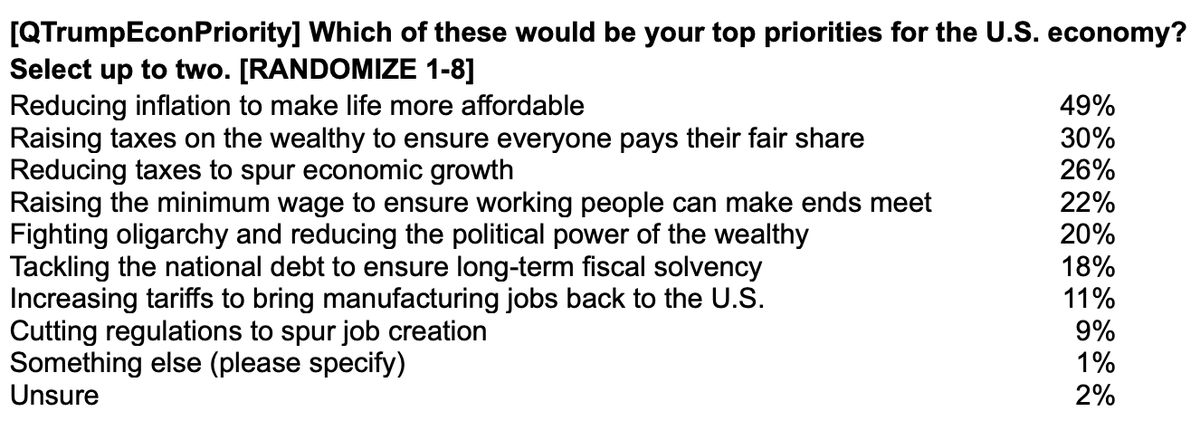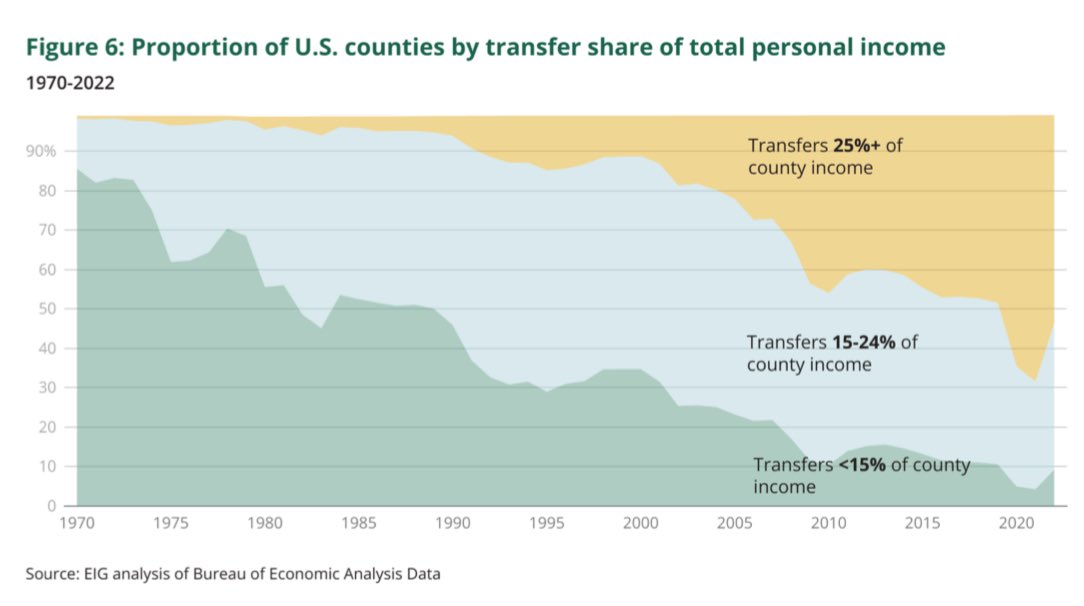One of the load-bearing claims behind pro-tariff populism is that recent decades of globalization and trade liberalization have been a disaster for American workers.
Let’s examine that claim against the evidence. 🧵
Let’s examine that claim against the evidence. 🧵
https://twitter.com/LettieriDC/status/1920131600487944348
The modern hyperglobalization era began in 1994 with NAFTA, which created the largest free trade zone in the world. Decades later, NAFTA is often blamed for destroying jobs, closing factories, and harming the working class.
For example, this from GOP Sen. Eric Schmitt:
For example, this from GOP Sen. Eric Schmitt:

But the pre-NAFTA period was hardly a paradise for American workers. Wages had been stagnant for two decades. When did the stagnation era end? 1994.
In the years since, the typical worker has seen substantial wage gains in spite of the setbacks caused by recessions.
In the years since, the typical worker has seen substantial wage gains in spite of the setbacks caused by recessions.

What about the harm to men’s wages as factories closed and manufacturing jobs dried up?
Men’s wages hadn't just been stagnating prior to NAFTA -- they were in outright *decline*. Look at when they started to grow again.
Men’s wages hadn't just been stagnating prior to NAFTA -- they were in outright *decline*. Look at when they started to grow again.

But surely free trade was a disaster for low-wage workers?
Not so fast. The 25th percentile worker has seen 53% real wage growth since NAFTA -- faster than the median or 75th percentile!
This is a huge problem for the anti-globalization narrative.
Not so fast. The 25th percentile worker has seen 53% real wage growth since NAFTA -- faster than the median or 75th percentile!
This is a huge problem for the anti-globalization narrative.
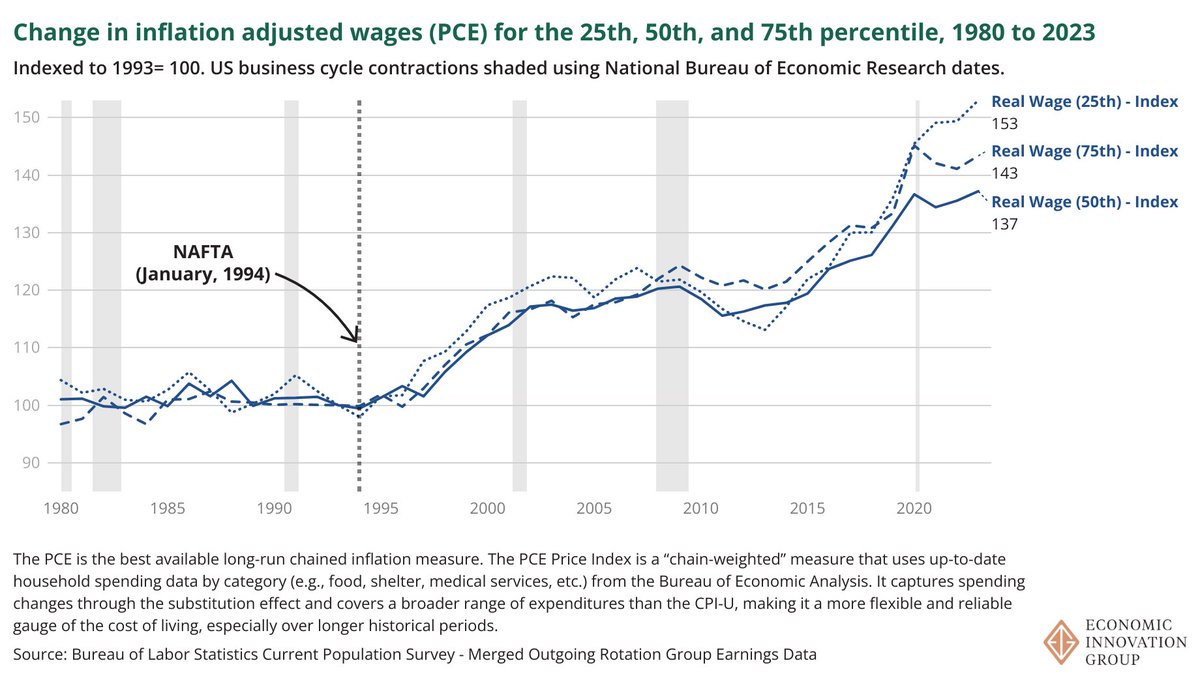
But wait, it gets better. Using EPI's preferred method shows that the 10th percentile worker has seen a 49% bump since NAFTA, which is just behind wage growth at the 90th percentile.
Does this square with the anti-globalization narrative? Not at all.
Does this square with the anti-globalization narrative? Not at all.

For men and women alike, up and down the income distribution, it’s difficult to find the evidence from wage trends that the post-NAFTA era has been a disaster.
It’s much easier to conclude the opposite, *especially* for male workers.
It’s much easier to conclude the opposite, *especially* for male workers.
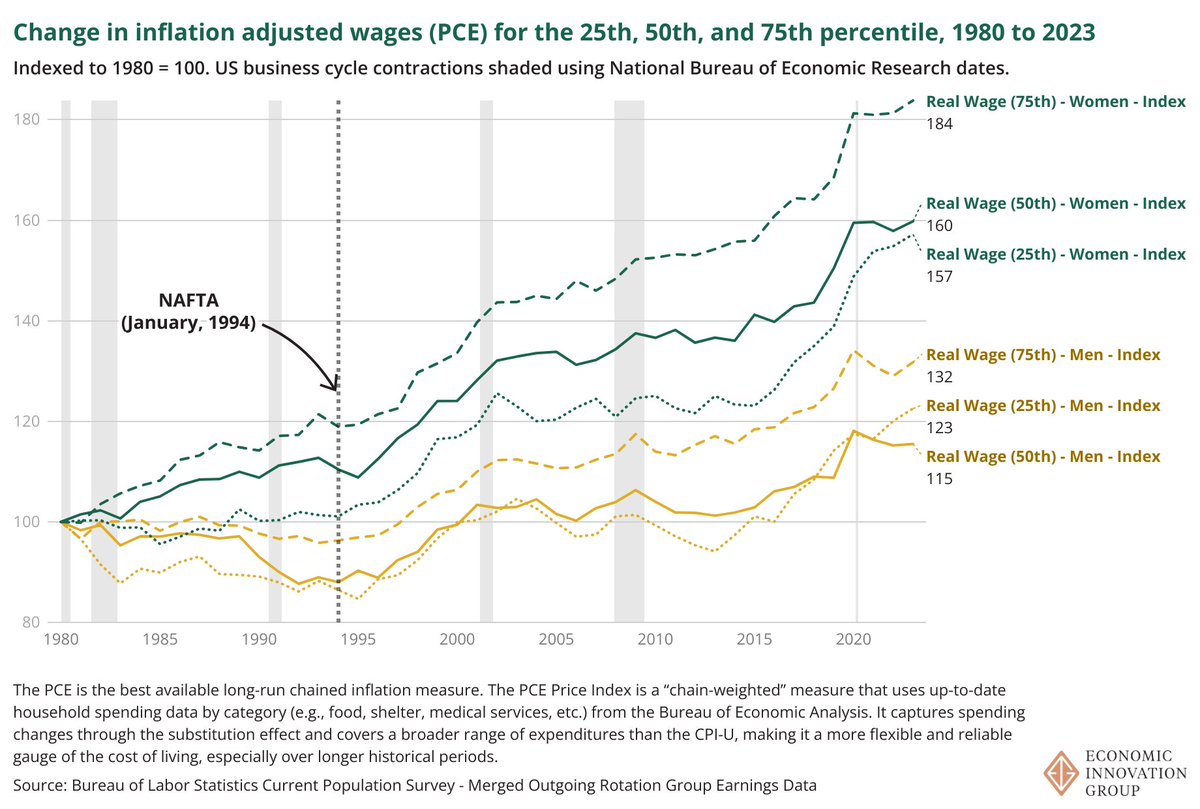
What about the typical family? Same basic story: significant income gains in spite of huge setbacks from the recessions of the 2000s. 

But is the wage data missing something fundamentally broken about the (I hate this term) lived experience of American workers in the modern economy, as is often claimed? Let’s look at survey data.
In 2024, the *exact same* share (86%) of workers said they were satisfied with their jobs as in 1993, just before NAFTA. Only 3% were completely dissatisfied.
The main difference? Workers in 2024 were much more likely to report being “completely satisfied.”
In 2024, the *exact same* share (86%) of workers said they were satisfied with their jobs as in 1993, just before NAFTA. Only 3% were completely dissatisfied.
The main difference? Workers in 2024 were much more likely to report being “completely satisfied.”
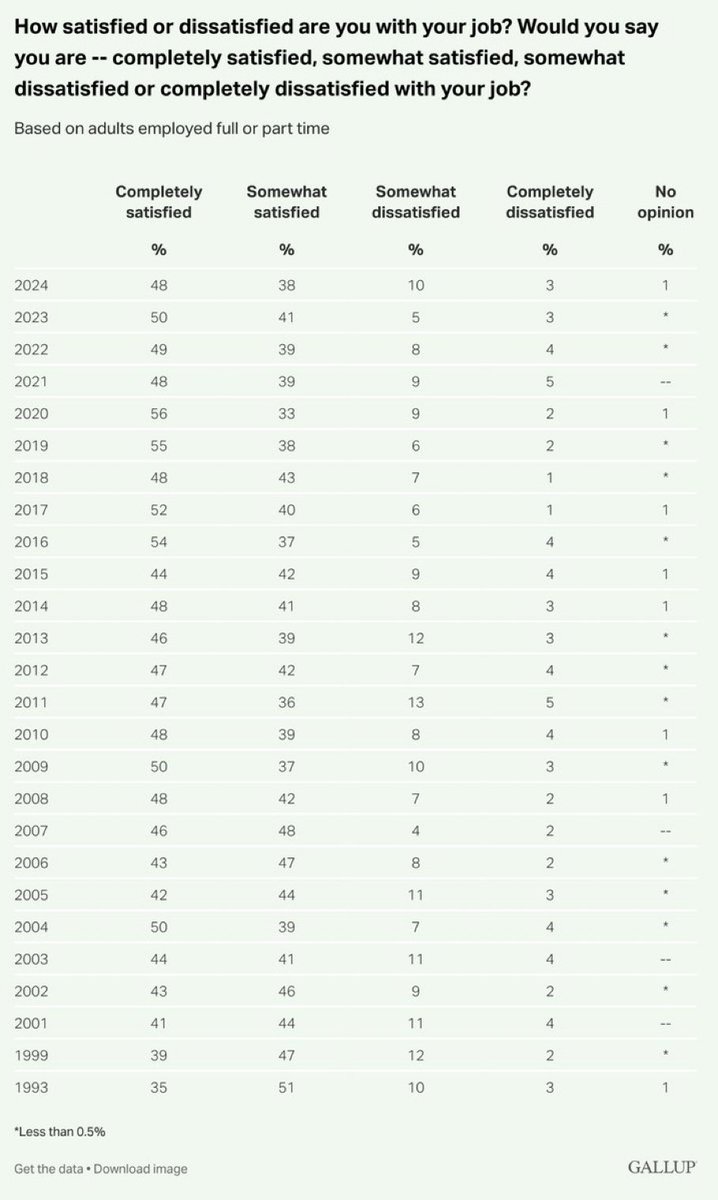
There's more. By a +66 margin, American workers today agree that hard work can get them ahead. Only 4% strongly disagree.
If something is fundamentally broken here, workers themselves don’t seem to notice.
If something is fundamentally broken here, workers themselves don’t seem to notice.

“Okay, but the American Dream is more than just access to cheap stuff.”
True! But necessities like food, clothing, and housing used to take up the vast majority of household income. Low-income people benefit the most from access to affordable products.
True! But necessities like food, clothing, and housing used to take up the vast majority of household income. Low-income people benefit the most from access to affordable products.
https://x.com/jmhorp/status/1922382248700998015
My point here is not to that free trade is a panacea. It’s not. There are many more winners than losers, but the losers deserve our attention.
Nor am I saying that the *pace* of progress for workers over the past 30 years has been satisfactory. It hasn't. We can do much better, especially in minimizing the harms caused by recessions.
Nor am I denying that, in spite of real wage gains, the cost of things like housing have gone up too much and too quickly. That’s true, but NAFTA or China PNTR didn’t write your local zoning rules.
Nor am I saying that the *pace* of progress for workers over the past 30 years has been satisfactory. It hasn't. We can do much better, especially in minimizing the harms caused by recessions.
Nor am I denying that, in spite of real wage gains, the cost of things like housing have gone up too much and too quickly. That’s true, but NAFTA or China PNTR didn’t write your local zoning rules.
There are also serious challenges facing communities that have been on the losing side of economic transitions.
Addressing those challenges is a key motivation behind our work @InnovateEconomy, where we devote enormous attention to economic geography.
eig.org/distressed-com…
Addressing those challenges is a key motivation behind our work @InnovateEconomy, where we devote enormous attention to economic geography.
eig.org/distressed-com…

But whatever challenges we face, the foundational economic claim behind the populist trade agenda is thoroughly contradicted by the best available evidence.
Simply put: if the free trade era was a disaster for workers, we’d see it clearly in the data. We just don’t.
Simply put: if the free trade era was a disaster for workers, we’d see it clearly in the data. We just don’t.

All of this illustrates why we need a new consensus on worker progress.
That is precisely why we launched the American Worker Project last year. It features a flagship report on a range of important labor market trends, a national survey of worker sentiment, and a guest essay series featuring contributions from the likes of @paulkrugman @jasonfurman @MichaelRStrain @mwanamak @swinshi @oren_cass @IrvingSwisher @emmabwiles @arpitrage @johnjhorton @stanveuger and more.
eig.org/american-worke…
That is precisely why we launched the American Worker Project last year. It features a flagship report on a range of important labor market trends, a national survey of worker sentiment, and a guest essay series featuring contributions from the likes of @paulkrugman @jasonfurman @MichaelRStrain @mwanamak @swinshi @oren_cass @IrvingSwisher @emmabwiles @arpitrage @johnjhorton @stanveuger and more.
eig.org/american-worke…
P.S. - @besttrousers has done my favorite annotation of EIG's wage graph to answer the inevitable flood of questions/objections. 

PPS - big shoutout to my brilliant colleague @BenGlasner for his help with the graphs throughout this thread. If you're not following him, you are missing out!
• • •
Missing some Tweet in this thread? You can try to
force a refresh



